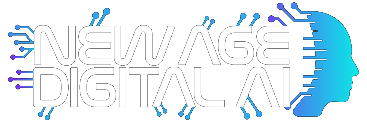
Data is the lifeblood of machine learning, but the tools used to handle, interpret, and analyze that data determine how well any model performs. Modern tools streamline and expedite operations like cleaning, preprocessing, and extracting insights from text. In order to ensure that a Data Driven Approach Machine Learning produces the greatest results, this article examines some of the top tools available to improve and expedite machine learning procedures.
Essential Data Preprocessing Tools
Data preprocessing is the foundation of machine learning. Tools like Pandas, NumPy, and Scikit-learn simplify the process. Pandas help handle missing data, clean datasets and create meaningful features. NumPy excels in numerical computations, making matrix operations efficient. Scikit-learn provides preprocessing modules like scaling, encoding, and normalization. These tools transform raw data into structured forms, enabling algorithms to work effectively. Moreover, preprocessing minimizes errors and enhances model accuracy.
Top Data Visualization Tools
Visualization tools like Tableau, Power BI, and Matplotlib uncover hidden patterns in data. Tableau offers interactive dashboards for large datasets. Power BI connects various data sources, ensuring dynamic reports. Matplotlib, ideal for Python users, provides customizable visualizations like bar charts, heatmaps, and scatter plots. These tools improve understanding by presenting complex data visually. Additionally, they assist stakeholders in making informed decisions, bridging the gap between data scientists and business leaders while also benefiting from professional IT services to ensure seamless integration and support.
Automated Feature Engineering Tools
Feature engineering often defines a model’s success. Tools such as FeatureTools, H2O.ai, and Google Cloud AutoML Tables automate this labor-intensive task. FeatureTools creates hierarchical data relationships, generating advanced features automatically. H2O.ai uses machine learning to suggest optimal features for datasets. Google Cloud AutoML Tables identify and process relevant variables with ease. These tools save time, reduce manual effort, and ensure the extraction of impactful features, boosting model performance significantly.
Machine Learning Frameworks
Frameworks like TensorFlow, PyTorch, and Keras let machine learning models be developed and applied more readily. TensorFlow’s scalability qualifies it both for production tasks and research. PyTorch offers dynamic computation graphs to provide more freedom in experiments. Keras is well-known for its simple interface and speed of prototyping. These frameworks support deep learning, reinforcement learning, and traditional machine learning methods. Furthermore, their extensive libraries and community support empower developers to innovate and refine their models seamlessly. A Data Driven Approach Machine Learning is made possible with these frameworks, ensuring effective model implementation.
Cloud-Based Tools
Cloud platforms like AWS SageMaker, Google AI Platform, and Azure Machine Learning provide scalable solutions. SageMaker offers end-to-end machine learning services, from data preparation to deployment. Google AI Platform ensures easy integration with its ecosystem, which is ideal for big data projects. Azure Machine Learning emphasizes collaboration and enterprise-grade scalability. These tools democratize machine learning by reducing infrastructure concerns. Additionally, they enable teams to focus on analysis and problem-solving.
Best Data Cleaning Tools
Data cleaning ensures that models learn from quality inputs. Tools like OpenRefine, Trifacta, and DataWrangler excel in this domain. OpenRefine transforms messy datasets with operations like clustering and reconciliation. Trifacta’s intelligent suggestions simplify large-scale data wrangling. DataWrangler integrates seamlessly with Python, providing scripts for automated cleaning tasks. Clean data reduces noise and biases in models, improving accuracy. Moreover, these tools streamline workflows, enabling faster deployment of machine learning projects making them invaluable for a robotics expert working on advanced automation systems.
Transforming Text into Insights with Advanced NLP
Transforming Text into Insights with Advanced NLP by Navin Kamuni and Suresh Dodda is a key resource for understanding Natural Language Processing (NLP). It covers fundamental subjects like sentiment analysis, part-of-speech tagging, and text preprocessing. More sophisticated methods like Transformers and Recurrent Neural Networks (RNNs) are also often used. These methods have practical applications in healthcare, finance, and beyond. Furthermore, the book emphasizes practical implementation, making it indispensable for those mastering NLP and machine learning.
Conclusion
The success of machine learning hinges on the tools used throughout the pipeline. From preprocessing and visualization to feature engineering and NLP, modern tools simplify and enhance workflows. By leveraging these technologies, professionals can uncover insights, build accurate models, and scale their efforts efficiently. Investing in the right tools ensures a Data Driven Approach Machine Learning that delivers impactful results across industries.
